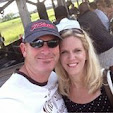Questioning is important because:
1. It helps students understand and clarify what they have read.
2. It helps students draw conclusions.
3. It helps students make inferences. This allows them to "question" the author as he/she is reading.
4. It involves critical thinking.
5. It allows the reader to evaluate the author's writing and purpose.
5. It can be used throughout life.
Teachers should teach that there are relationships among the type of questions "in the book"and "in the head":
- In the book questioning is usually factual. "Thin" questions are right there in the book. These kinds of questions are usually answered in one or two sentences answering the questions-Who? What? When? Where? In my head questioning usually leads to inferences.
- In the reader's head questioning leads to making inferences. "Thick" questions are usually in the reader's head. However, they require higher level thinking on Bloom's Taxonomy. These usually require the reader to explain, compare/contrast, use cause/effect, or list/give examples. These are usually answered in more detail using the questions Why? How?
Questioning, as all reading comprehension strategies, must be practiced and modeled by the teacher before, during, and after reading.
Here is a sneak peak at a question graphic organizer.
Be sure to check out my my TpT store for many more reading strategy bookmarks and graphic organizers.
Be sure to head on over to
and
for lots more fun!
Be sure to comment and tell how you use the organizer or bookmarks.
Enjoy!






















































